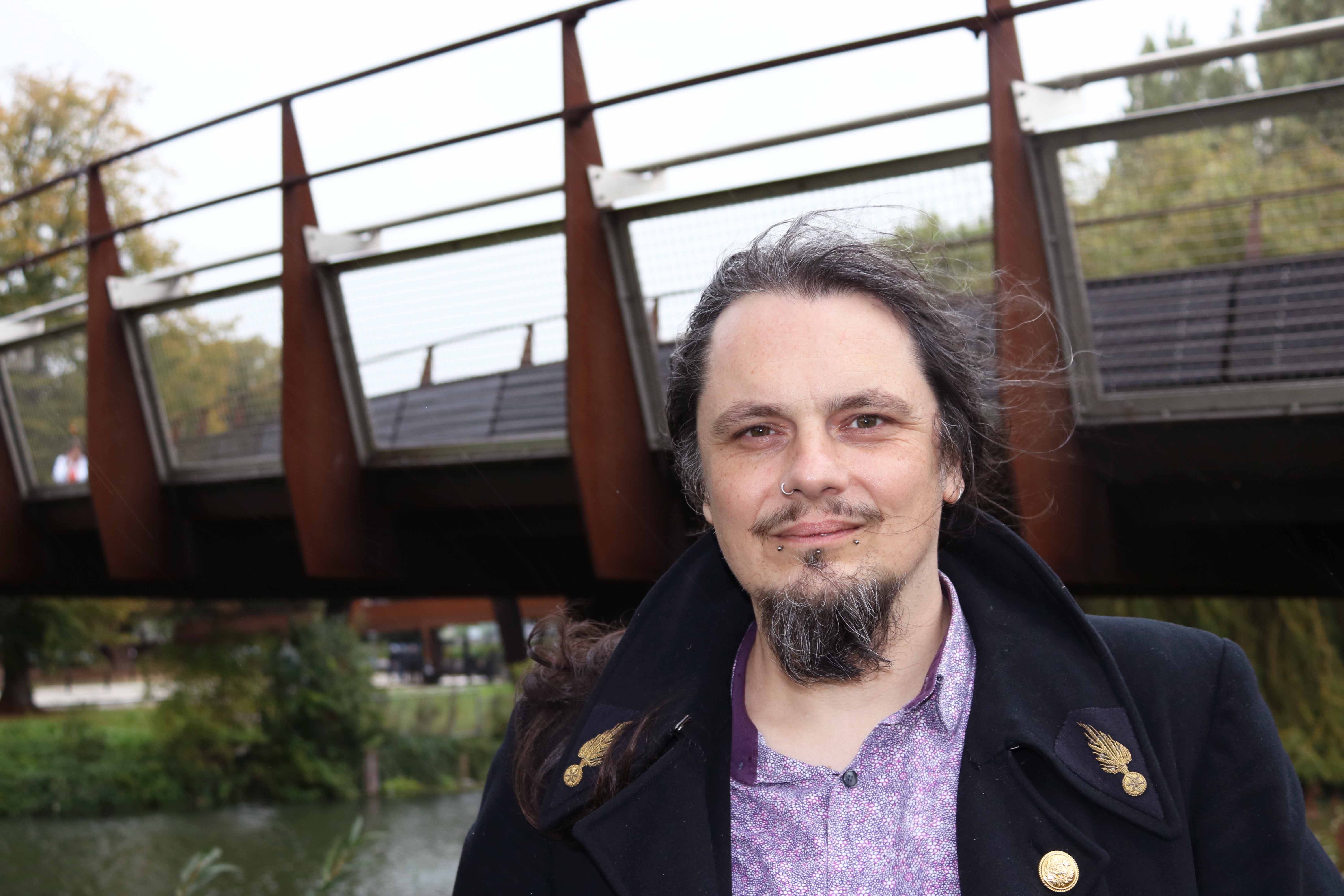‘The next Banksy will be using augmented reality’ – Iain Douglas blogs on how technology is empowering artists and threatening art galleries
Date 14.10.2019
14.10.2019
The advance of technology is threatening the stranglehold galleries have on the art world and will surely mean the next Banksy will be using augmented reality (AR) – says University of Northampton video games expert, Iain Douglas.
In his debut blog, the Senior Lecturer in Games Design explains how AR and Mixed Reality (MR) technology – which is being used in popular games such as Pokemon Go – Is already being exploited by pioneering artists, such as Jeff Koons, and will become the tools of tomorrow’s Banksy.
Iain, pictured above, said: “AR/MR are increasingly available to anyone who has a mobile or tablet… they are used in schools as teaching aids… in immensely popular video games and now in the most tentative way, they are beginning to circle the wagons of the art world and some of the big shooters are investigating, such as Jeff Koons.
“But the big shooters are just playing with cap guns whilst the disruptors are coming. The young generations of digital natives who are used to this technology will be the guerrilla artists of tomorrow.
“AR/MR platforms will continue to spring up becoming open source and content rich. Tech savvy kids and artists will add their own content and put it ANYWHERE. As geolocation becomes more accurate and remote, they’ll be able to do this without even leaving home, having just the coordinates of the display destination at their disposal.”
This will have massive implications for art galleries and museums, and public and private spaces, argues Iain.
He said: “Galleries will not die as long as there is a need for artists to be supported and for art to be validated and commodified. AR/MR may even have a positive effect in terms of user engagement and attracting new audiences if galleries are quick to get on board.
“Sharp curators and gallery owners will soon have a whole host of tech savvy artists on their books capable of all kinds of mischief and commentary and visual delights. However, the sacred space will not be the same. The doors are wide open.
“The disruptors, the artists, the memers will put their content anywhere including inside gallery spaces and with the right app, anyone in the target space will be able to see it and capture it against that live backdrop, to share with the world. These creations/intervention/subversions will not be (easily) curatable or removable, because they’re simply ‘not there’.
“Galleries will be violated spaces. Overrun by the whims and wheezes of invisible liminal pranksters. Exhibitions will be subverted. Everywhere will be.”
You can read more about how Iain and his team at the University of Northampton are encouraging their students to explore the possibilities of AR and MR technology.
In October, the BBC carried a story about a virtual sculpture trail at the University’s Waterside Campus – which is thought to be the first of its type on a campus in the UK.
Earlier this summer, it was reported that the University is believed to be the first-ever institution to harness augmented reality technology to display student work at Graduate Fashion Week.
Visit Iain’s blog site and follow him on Twitter.